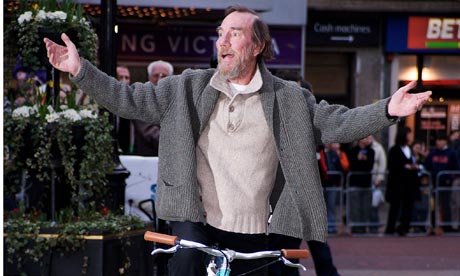
For the release of her film The Age of Stupid Franny Armstrong insisted on the premiere being a ‘0-footprint’ affair.
Indeed, big names like Vivienne Westwood turned up on a bicycle, rickshaw and electric car rather than in a limo.
The cinema was powered by the sun, and the usually luxurious red carpet replaced by one that is green and fashioned from recycled bottles.
The premiere of the film, which sees Postlethwaite play a man living in 2055 looking back at footage from the present day and considering why humanity did not save itself from climate change, was also broadcast at over 60 cinemas and venues across the UK.
All of the profits from the event are set to go towards the Not Stupid campaign, which has been created to raise awareness of climate change in the run-up to December’s major summit on the topic in Copenhagen.
With over 16,000 film fans attending the live screening of the premiere across the UK, and Guiness Book of World Records confirming The Age of Stupid screening as the largest ever film premiere, filmmakers succeeded where other climate change films have failed – the “earnest” 11th Hour , which featured Leonardo DiCaprio, and Al Gore’s lecture, An Inconvenient Truth — to galvanise cinema-goers into action.
As the environment begins to hit our news pages more and more, we must consider the changes, choices and approaches to creative output, this premiere shows us that it’s actually possible to launch the largest film premiere without making any “footprint” on our planet.
share this
———————–












